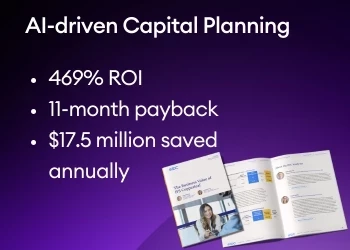Peter Drucker believed that no manager can operate effectively without taking risks. The fact is that taking risks demands self-confidence. Drucker wrote: “Living in fear of loss of job and income is incompatible with taking responsibility for job and work group, for output and performance.” That’s all well and good, but how can you not fear job loss, especially in times when the loss of a job is a real possibility, regardless of tenure or prior highly successful performance?
The Answer is Usually Self-Confidence
I challenge you to find any “up and comer,” “fast burner” or whatever you want to call managers who seem to zoom right up the corporate ladder and right past their contemporaries, who don’t possess a healthy dose of self- confidence as well. Self-confidence is always a necessity for significant success. Unfortunately, the fact that it is a necessity doesn’t in itself tell us how to acquire this important trait.
Drucker’s Secrets
You must acquire self confidence yourself before can you instill it in others. Yet in my research into Drucker I found only three ways to have self confidence:
1. Being born with it
2. Gain it slowly and laboriously over many years as you acquire experience, make mistakes, learn from them
3. Start building your self-confidence yourself, purposely, improving in whenever you decide
Arrange to be Born with Self Confidence
Now there’s a stunt if you could pull it off. No one starts right out in life accomplishing what we think of as big things. We start as an infant and accomplish what we today think of as small things like learning walk, and talk. But are these really small things? At the time you first learned to do any of these routine human accomplishments, if you had been able to think about it at all, you probably would not have thought that they were so small. The truth is, even with these “small things” we started out by doing still smaller things first and slowly increasing the difficulty of the subtasks until we could accomplish such a really major overall task such as learning to walk for the first time.
Today, there is no longer any doubt that unless you have a major injury, when you stand, put forth one leg and then another, you are going to move forward and walk. As you read these sentences, unless you are just learning the language the edition you are reading was published in, there is little doubt but that you will understand what you have read. You automatically expect positive results.
With the more complex and challenging tasks and projects of adults and managers, you may fail to expect to succeed for only one of two reasons. Either you have been unsuccessful at similar tasks or projects in the past, or you have never tried to accomplish them in the first place. And by the way, those who have never tried the task in which they don’t expect to succeed frequently haven’t tried because before they felt that they would fail if they did.
You Learned to Crawl Before You Can Walk
How many infants have you heard of that simply took their bottles out of their mouths, placed them on a nearby table, hopped out of their cribs and begin to walk or run? I don’t know about you, but I haven’t heard of any. The correct sequence is that the baby learns to roll over, begins to crawl, gains self-confidence enough to stand up, gains a little more self-confidence and takes a step. Usually the first step ends in a minor disaster and the infant falls. But, the baby knows that at least it made a start.
Usually the parents are so elated about the attempt that they are full of praise and cheer enthusiastically even though the baby may have not managed to take even a single step successfully. So the failed attempt is forgotten, or is not thought about as a failure, but as a successful first attempt, and the child eagerly tries again not long afterwards, and even if he or she doesn’t grow up to run a four minute mile, at least running is mastered.
This illustrates an interesting fact about why people in general, and many consultants and executives lack self-confidence later on in life. An infant learning a more mature task usually has someone cheering him on. But even if he didn’t, who’s to say that that first step when he fell was a terrible attempt or a good one? The problem is, as we get older, there are others that observe us either with or without malice. Moreover, many of these observers are judgmental and never fail to let us know when we do a poor job, less so when we do an acceptable one, or even a pretty good one. So we get the idea that it is never a good attempt.
But it is always a good attempt. It took my youngest son, now a successful management consultant, almost two years to learn to talk. I wasn’t worried. It took Einstein almost four years!
[inlinead]
Gain Self Confidence through Experience Alone as You “Pay Your Dues”
Some of us eventually become successful this way and there is nothing wrong with doing this, except that it is usually a long, and sometimes painful process. Basically, you enter your work or a profession, do what everyone else is doing, work hard and do your best. Hopefully you stand out and your efforts are eventually noted and rewarded. If all goes well and as you progress upward, at every stage you gain more self confidence.
However, with this method you get blown by the winds of fate. Sometimes a promotion you think that you earned goes to someone else. Through no fault of your own, you could suffer a layoff. Bad things seem to occur at inopportune times such as when you have only recently bought an expensive house, are supporting a child in college, or when you are older and it is more difficult to find another job.
If you survive and are a little lucky, you will probably eventually reach your goals if they are not too high. But, the process is uncertain, takes time, and there are no guarantees that you will get to where you want to go, even eventually. There is a better way.
Take Charge of Your Own Confidence Building
I like this method best. It is faster and with less risk than the previous method. Moreover, you have more control. The method of taking charge that I recommend is based on a simple principle. You can develop anything about yourself, physical, mental, or spiritual by beginning with a small challenge and increasing it over time.
In this way it is related to the slow, “pay your dues” method I discussed previously. Except that it is much faster, less risky and you are guaranteed results since you are not dependent on someone else, only yourself and you don’t stumble and learn from “hard knocks.” You proceed purposefully.
Drucker noted that: “Every artist throughout history has practiced kaizen, or organized, continuous self-improvement.” And, you will be a top producer if you put yourself where your strengths are and if you work on developing your strengths.” For example, exercise a muscle every day, and every day it is going to grow bigger and stronger.
Arnold Schwarzenegger didn’t start out with all those muscles that led him to win international bodybuilding championships even before he became an actor or Governor of California. However, by exercising with increasingly heavy weights every day, his muscles got bigger until after some years he was at world champion level. This didn’t start with Arnold. Milo, an ancient Greek athlete trained by lifting a calf every day and carrying it a short distance. Four years later he was still lifting the calf, but he gained immortal fame throughout the ancient world because the "calf” was now a fully matured bull. I don’t think anyone before or since has pulled off that stunt.
Now I’m not suggesting that you start lifting a calf every day to develop your self confidence, although this would certainly do the job. But the principle works for developing your self confidence in much simpler and easier ways. All you need to do is to make the decision that you are going to take a specific action to develop your self confidence in a specific area, and then to do it.Select a relatively easy goal to accomplish and proceed until you reach it. Every time you complete a task or goal successfully, celebrate and congratulate yourself. Then set a higher goal or a more difficult task. It’s just like training with weights. You build up the amount of weight slowly or run more swiftly as you develop your strength. Before long, you’ll be doing things that you never thought you could. You will have acquired that self-confidence you need to succeed in whatever you desire, and more often than not, you will succeed!





















